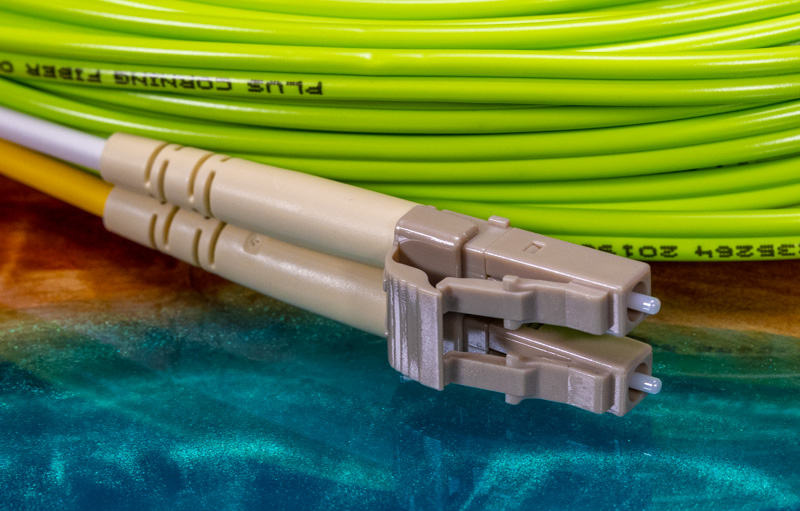Well, towards the end, the discussion derailed a bit into audio-cheat cables...
- I can't fault the logic that copper will eat more energy at higher frequencies and longer distances vs. optics
- And the overhead of using complex modulations in order to push more data with the same frequencies costs energy and latency, too
That's just physics, I don't argue with physics.
Economy is another matter and for me that includes being lazy and stuff being good enough for my needs.
I still think that the main reason 10Gbit was so crazy expensive initially was more about ASIC vendors wanting to cash in on a unified storage and network fabric and virtualization support: they saw the consolidation all that offered and that directly threatened their bottom line, so they consolidated the functionality into fat ASICs and upped the prices.
But the complexity made for bad quality, ASIC and driver bugs that utterly frustrated players like VMware, who after some years just went software for switches and overlay networks (won't work at 400Gbit, so that's changing again).
So a lot of these ASIC vendors, NIC and switch side, went bust or merged, 10 GBit was largely a wasteland in consumerland and even in data centers a lot of that VM offload stuff remained "dark silicon".
Aquantia & Co. changed that with NBase-T, which came far too late, but it's been around for a while now. And it does change the power game, because it's no longer 10 Watts per port, but around 3 at 10Gbit, lower at 5/2.5/1Gbit or with Green Ethernet on shorter cables: much like laptop CPUs power consumption is now related to usage and not nearly as hot as it used to be.
I remember powering on a 48 port HP 10Gbase-T switch in my office during testing and I had people running in from half the floor, because it sounded like a jet taking off: I think the power supply was rated higher than most 4HE servers and this was a 1HE unit.
Current 8-port NBase-T switches are unnoticeable, even if they use a bit of active cooling, they couldn't do that at 80 Watt; 5-port designs are fully passive and that means less than 10 Watts for all.
And then it changed the price point, €50 per port at retail is still a little high for my taste, but I keep hearing that 1/2.5Gbit ports are €1 for mainboard vendors, not the €25 I pay for a USB NIC. But then I've been running my first NBase-T switches for 8 years without feeling the need to upgrade. That's actually ok, especially if they last me another: I don't think I'll ever need 400Gbit in the home lab.
Copying a couple of 50GB VMs from storage to a workstation or laptop over 1Gbit/s was a bit of a bother, at 1Gbyte/s I'm not missing my flight or overdosing on coffee.
And speaking of laptops, many of those couldn't go beyond 2.5Gbit because USB3 was the best they could do (ok the QNAP 5GBase-T would do something 3.2Gbitish...). Still almost 3x speed was well worth getting €25 USB NICs, yes from RealTek and they do really just work, too! (on Linux)
Now with Aquantia TB adapters they'll also do 10Gbit, just like all those NUCs, which are much less useful for all the compute and storage power they have these days at 1 or 2.5GBit alone. No driver issues, on Linux, every distro with a Kernel 4.9 or newer.
I'm not a network guy. I am a connectivity guy. I've longed for decades to have a simple USB or TB based fabric that just works for all East-West traffic. I keep having blood pressure issues when they talk about 5/10/20Gbit USB whatnot, but only offer 1 or 2.5 Gbit Ethernet: What's the use of all that bandwidth on USB unless you can talk to something else?
It's truly crazy to go Ethernet, when you could go four lane PCIe with a TB cable at €10! Most of the time I don't need to bridge kilometers I just want to build a fault-tolerante hyperconverged cluster from economy components.
And as long as I can't have that, I'll make do with switches and cables that just connect what I have at the fastest bandwidth the device supports, without having to manage the NIC, the GBIC, the optics, the cable and different ones for every speed and length on each side.
I understand I have to make that effort once I leave the "rack" under my desk, but burning a few extra Watts is the fault of those guys who failed to make a USB or TB fabric work, not mine for not going optical on Ether.
I'm not saying that NBase-T or Aquantia is universally good.
But saying it's universally bad is ignoring very valid use cases where they are actually better or just good enough.

www.fs.com



